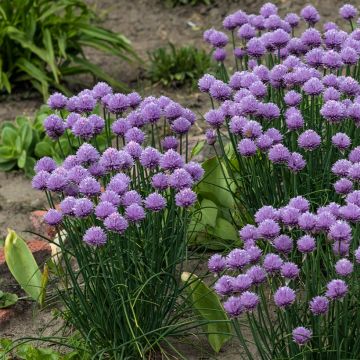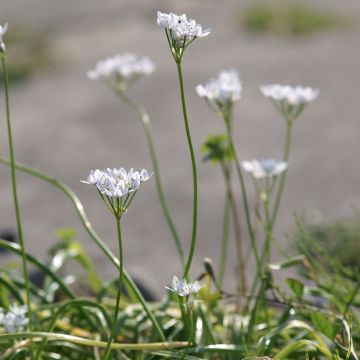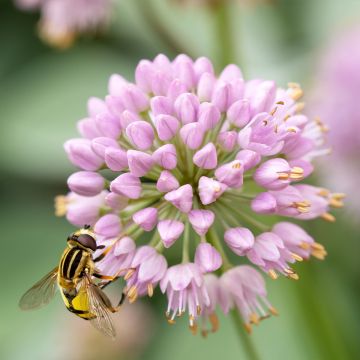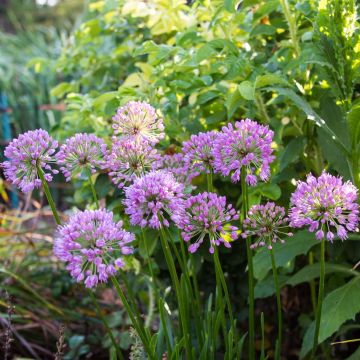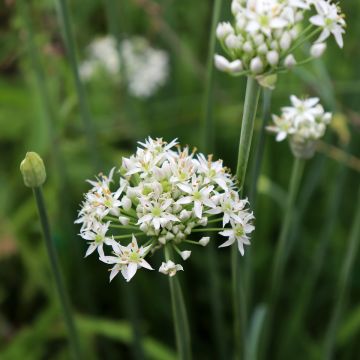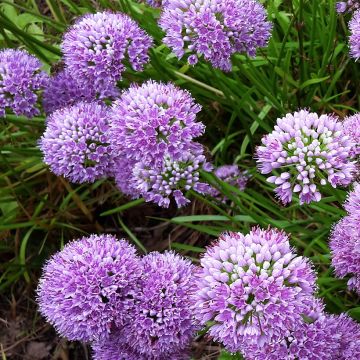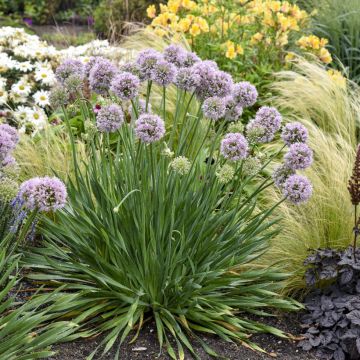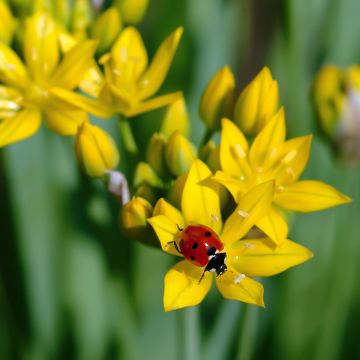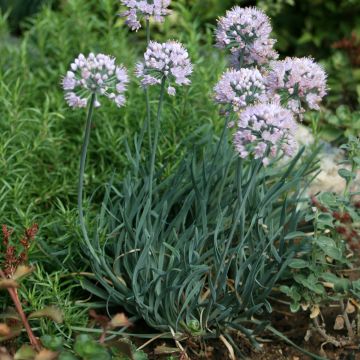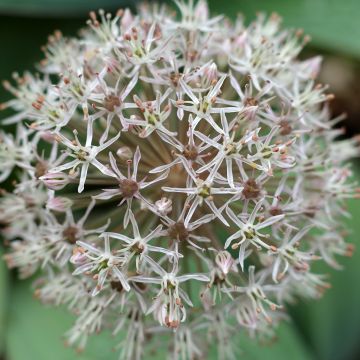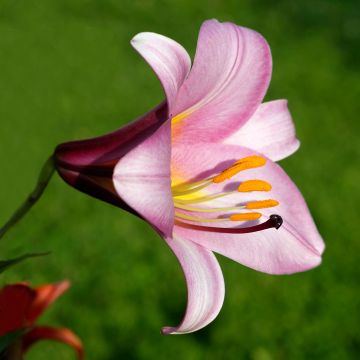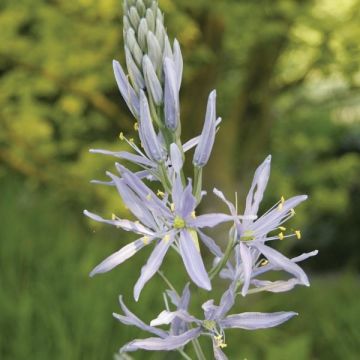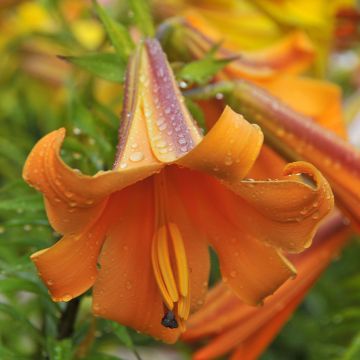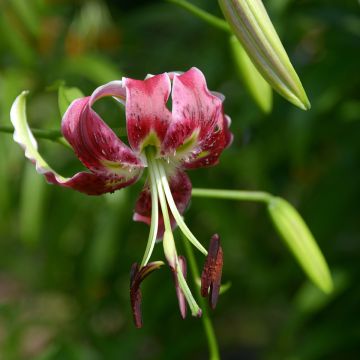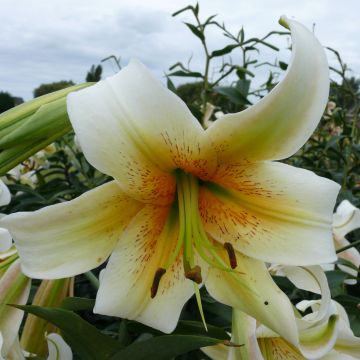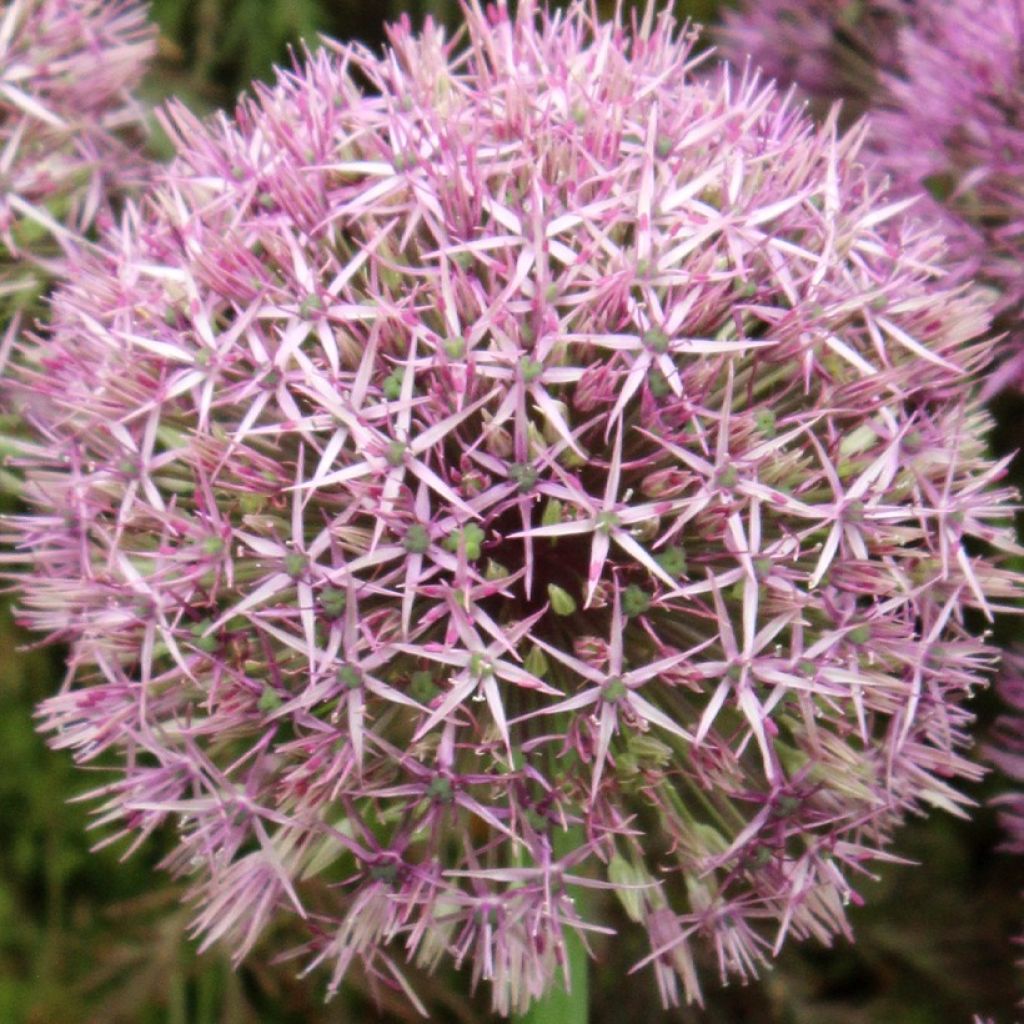

Allium Universe
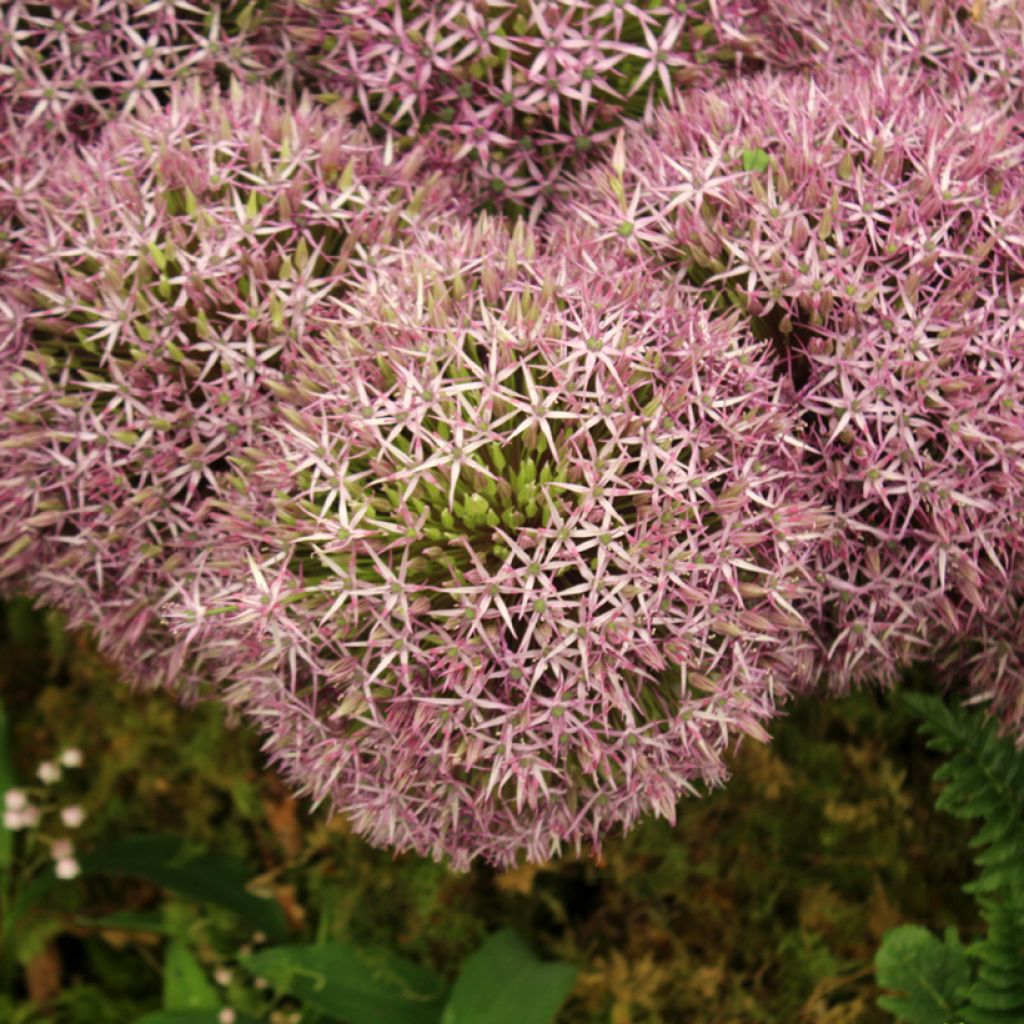

Allium Universe
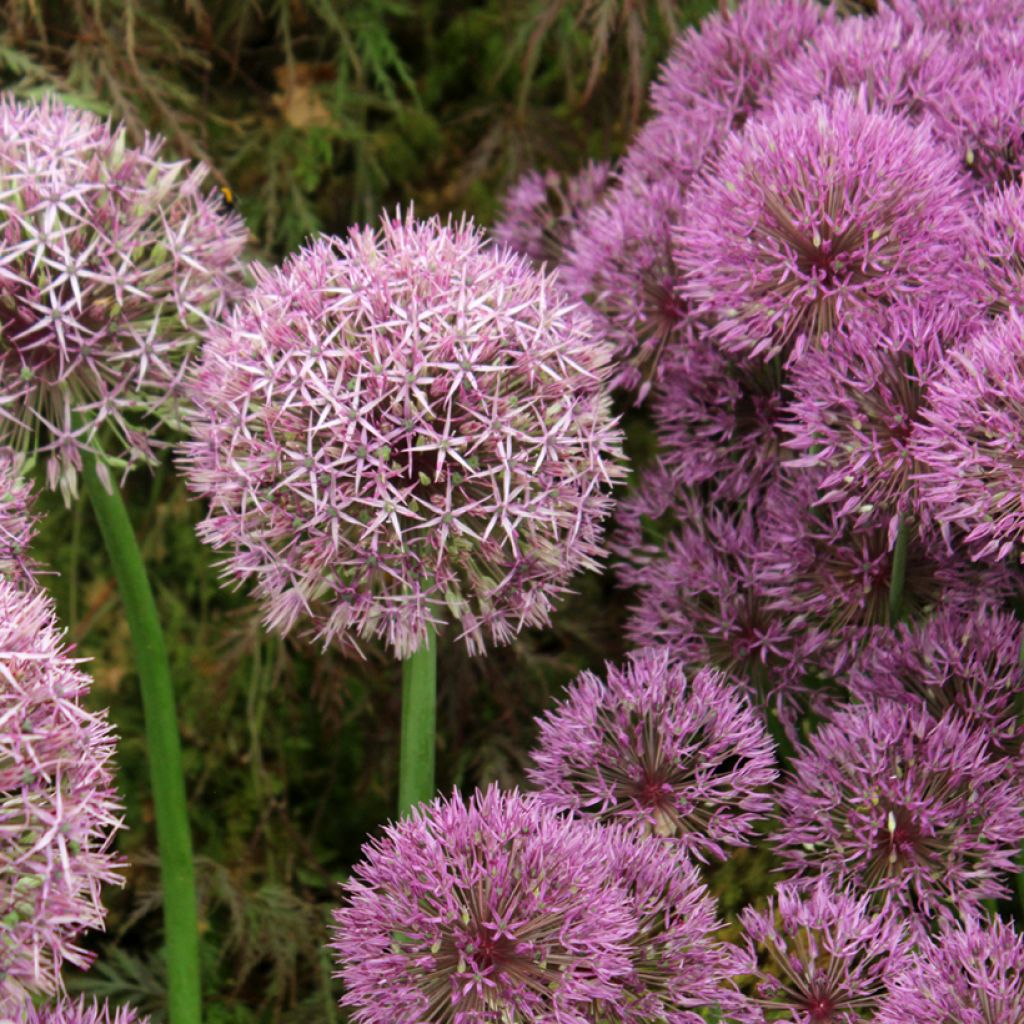

Allium Universe
Allium Universe
Allium Universe
Onion, Garlic, Leek, Chive, Shallot
This plant carries a 6 months recovery warranty
More information
We guarantee the quality of our plants for a full growing cycle, and will replace at our expense any plant that fails to recover under normal climatic and planting conditions.
From €5.90 for pickup delivery and €6.90 for home delivery
Express home delivery from €8.90.
Does this plant fit my garden?
Set up your Plantfit profile →
Description
The 'Universe' Allium is currently the largest ornamental onion. The massive, spherical flower heads of this allium measure at least 18 cm in diameter. Of a slightly mauve violet, this globular flowering, composed of a multitude of shiny star-shaped flowers, is carried at the top of sturdy stems in May and June. This variety multiplies rapidly over the years in well-drained soil and full sun. It is superb in borders, flowering pots, and dried or fresh bouquets.
The Universe Allium is a perennial herbaceous bulb, belonging to the Alliaceae or Amaryllidaceae family according to classifications. It comes from Allium giganteum, native to eastern and central Asia, from Afghanistan to Pakistan and Russia, as well as the Himalayas. It is a plant of sun, and light, well-drained soil that prefers limestone soils. Its bulb is resistant to cold in soils that are not too wet, especially in winter and the second half of summer.
The large bulb of this 'Universe' Allium develops a rosette of long and large fleshy, ribbon-like leaves in spring, with a green-grey-blue colour, measuring up to 50 cm in height. This decorative foliage dries up as the flowers bloom. The upright and strong, 70 cm flower stems emerge from the end of May in average climates, sometimes in June-July depending on the region. They bear at their tip a superb globular inflorescence measuring 18 to 22 cm in diameter. Each inflorescence is composed of numerous small star-shaped flowers with 6 petals in a pink-mauve colour. These flower heads have no fragrance but remain very decorative in borders once pollinated. The bulb replenishes its reserves after flowering and produces many daughter bulbs, allowing it to multiply rapidly.
The 'Universe' ornamental onion is remarkable combined with perennials in shades of pink and blue in large borders. Perfect in a contemporary-style setting, for a dynamic effect, its flowers can structure a modern garden where several geometric shapes oppose each other. It can be associated, for example, with moving grasses like Stipa tenuissima, lavenders, and cone-shaped topiaries. It is irreplaceable in a romantic mixed border, surrounded by a carpet of Nepeta 'Six Hill Giant', accompanied by Stachys byzantina with grey foliage and herbaceous peonies with large flowers against a backdrop of opulent flowering roses. In any situation, remember to accompany it with low-growing and bushy plants that will hide its base once the foliage has dried.
Report an error about the product description
Plant habit
Flowering
Foliage
Botanical data
Allium
Universe
Amaryllidaceae (Liliaceae)
Onion, Garlic, Leek, Chive, Shallot
Cultivar or hybrid
Other Allium
Planting and care
Ornamental alliums are relatively easy to grow plants in sunny and well-drained soils that do not retain too much moisture. However, they do require some soil moisture throughout their growth and flowering period, as well as just after flowering so that the bulb can replenish its reserves and multiply. This means that Mediterranean regions, where the soil naturally dries out from June onwards, are not very favourable for the perpetuation of Allium Universe, where it may tend to disappear over the years. Its ancestor, Allium giganteum, is not native to arid regions in summer, but rather to mountainous and rocky regions that receive more precipitation in early summer.
Preferably plant them before the end of October so that your Alliums have time to establish themselves. They dislike winter moisture in clayey and waterlogged soils. Give them a sunny spot in well-drained soil, even rocky or gravel-enriched. Bury them at a depth of 10 cm, spaced 15 cm apart for larger ones, a depth of 10 cm, spaced 7 cm apart for smaller bulbs. Planting in a 20x20cm pocket of pure sand proves effective in preventing bulb rot.
Planting period
Intended location
Care
This item has not been reviewed yet - be the first to leave a review about it.
Spectacular bulbs
Haven't found what you were looking for?
Hardiness is the lowest winter temperature a plant can endure without suffering serious damage or even dying. However, hardiness is affected by location (a sheltered area, such as a patio), protection (winter cover) and soil type (hardiness is improved by well-drained soil).

Photo Sharing Terms & Conditions
In order to encourage gardeners to interact and share their experiences, Promesse de fleurs offers various media enabling content to be uploaded onto its Site - in particular via the ‘Photo sharing’ module.
The User agrees to refrain from:
- Posting any content that is illegal, prejudicial, insulting, racist, inciteful to hatred, revisionist, contrary to public decency, that infringes on privacy or on the privacy rights of third parties, in particular the publicity rights of persons and goods, intellectual property rights, or the right to privacy.
- Submitting content on behalf of a third party;
- Impersonate the identity of a third party and/or publish any personal information about a third party;
In general, the User undertakes to refrain from any unethical behaviour.
All Content (in particular text, comments, files, images, photos, videos, creative works, etc.), which may be subject to property or intellectual property rights, image or other private rights, shall remain the property of the User, subject to the limited rights granted by the terms of the licence granted by Promesse de fleurs as stated below. Users are at liberty to publish or not to publish such Content on the Site, notably via the ‘Photo Sharing’ facility, and accept that this Content shall be made public and freely accessible, notably on the Internet.
Users further acknowledge, undertake to have ,and guarantee that they hold all necessary rights and permissions to publish such material on the Site, in particular with regard to the legislation in force pertaining to any privacy, property, intellectual property, image, or contractual rights, or rights of any other nature. By publishing such Content on the Site, Users acknowledge accepting full liability as publishers of the Content within the meaning of the law, and grant Promesse de fleurs, free of charge, an inclusive, worldwide licence for the said Content for the entire duration of its publication, including all reproduction, representation, up/downloading, displaying, performing, transmission, and storage rights.
Users also grant permission for their name to be linked to the Content and accept that this link may not always be made available.
By engaging in posting material, Users consent to their Content becoming automatically accessible on the Internet, in particular on other sites and/or blogs and/or web pages of the Promesse de fleurs site, including in particular social pages and the Promesse de fleurs catalogue.
Users may secure the removal of entrusted content free of charge by issuing a simple request via our contact form.
The flowering period indicated on our website applies to countries and regions located in USDA zone 8 (France, the United Kingdom, Ireland, the Netherlands, etc.)
It will vary according to where you live:
- In zones 9 to 10 (Italy, Spain, Greece, etc.), flowering will occur about 2 to 4 weeks earlier.
- In zones 6 to 7 (Germany, Poland, Slovenia, and lower mountainous regions), flowering will be delayed by 2 to 3 weeks.
- In zone 5 (Central Europe, Scandinavia), blooming will be delayed by 3 to 5 weeks.
In temperate climates, pruning of spring-flowering shrubs (forsythia, spireas, etc.) should be done just after flowering.
Pruning of summer-flowering shrubs (Indian Lilac, Perovskia, etc.) can be done in winter or spring.
In cold regions as well as with frost-sensitive plants, avoid pruning too early when severe frosts may still occur.
The planting period indicated on our website applies to countries and regions located in USDA zone 8 (France, United Kingdom, Ireland, Netherlands).
It will vary according to where you live:
- In Mediterranean zones (Marseille, Madrid, Milan, etc.), autumn and winter are the best planting periods.
- In continental zones (Strasbourg, Munich, Vienna, etc.), delay planting by 2 to 3 weeks in spring and bring it forward by 2 to 4 weeks in autumn.
- In mountainous regions (the Alps, Pyrenees, Carpathians, etc.), it is best to plant in late spring (May-June) or late summer (August-September).
The harvesting period indicated on our website applies to countries and regions in USDA zone 8 (France, England, Ireland, the Netherlands).
In colder areas (Scandinavia, Poland, Austria...) fruit and vegetable harvests are likely to be delayed by 3-4 weeks.
In warmer areas (Italy, Spain, Greece, etc.), harvesting will probably take place earlier, depending on weather conditions.
The sowing periods indicated on our website apply to countries and regions within USDA Zone 8 (France, UK, Ireland, Netherlands).
In colder areas (Scandinavia, Poland, Austria...), delay any outdoor sowing by 3-4 weeks, or sow under glass.
In warmer climes (Italy, Spain, Greece, etc.), bring outdoor sowing forward by a few weeks.

































